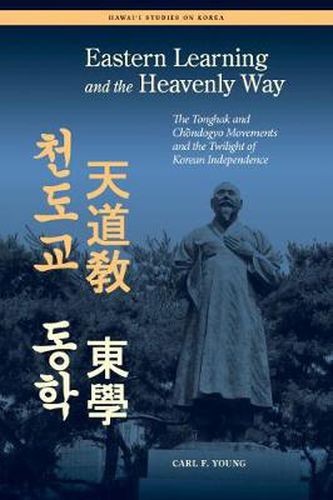Readings Newsletter
Become a Readings Member to make your shopping experience even easier.
Sign in or sign up for free!
You’re not far away from qualifying for FREE standard shipping within Australia
You’ve qualified for FREE standard shipping within Australia
The cart is loading…






Tonghak, or Eastern Learning, was the first major new religion in modern Korean history. Founded in 1860, it combined aspects of a variety of Korean religious traditions. Because of its appeal to the poor and marginalized, it became best known for its prominent role in the largest peasant rebellion in Korean history in 1894, which set the stage for a wider regional conflict, the Sino-Japanese War of 1894-1895. Although the rebellion failed, it caused immense changes in Korean society and played a part in the war that ended in Japan’s victory and its eventual rise as an imperial power.
It was in this context of social change and an increasingly perilous international situation that Tonghak rebuilt itself, emerging as Chondogyo (Teaching of the Heavenly Way) in 1906. During the years before Japan’s annexation of Korea in 1910, Chondogyo continued to evolve by engaging with new currents in social and political thought, strengthening its institutions, and using new communication technologies to spread its religious and political message. In spite of Korea’s loss of independence, Chondogyo would endure and play a major role in Korean nationalist movements in the Japanese colonial period, most notably the March First independence demonstrations in 1919. It was only able to thrive thanks to the processes that had taken place in the twilight years of Korean independence.
This book focuses on the internal developments in the Tonghak and Chondogyo movements between 1895 and 1910. Drawing on a variety of sources in several languages such as religious histories, doctrinal works, newspapers, government reports, and foreign diplomatic reports, it explains how Tonghak survived the turmoil following the failed 1894 rebellion to set the foundations for Chondogyo’s important role in the Japanese colonial period. The story of Tonghak and Chondogyo not only is an example of how new religions interact with their surrounding societies and how they consolidate and institutionalize themselves as they become more established; it also reveals the processes by which Koreans coped and engaged with the challenges of social, political, and economic change and the looming darkness that would result in the extinguishing of national independence at the hands of Japan’s expanding empire.
$9.00 standard shipping within Australia
FREE standard shipping within Australia for orders over $100.00
Express & International shipping calculated at checkout
Tonghak, or Eastern Learning, was the first major new religion in modern Korean history. Founded in 1860, it combined aspects of a variety of Korean religious traditions. Because of its appeal to the poor and marginalized, it became best known for its prominent role in the largest peasant rebellion in Korean history in 1894, which set the stage for a wider regional conflict, the Sino-Japanese War of 1894-1895. Although the rebellion failed, it caused immense changes in Korean society and played a part in the war that ended in Japan’s victory and its eventual rise as an imperial power.
It was in this context of social change and an increasingly perilous international situation that Tonghak rebuilt itself, emerging as Chondogyo (Teaching of the Heavenly Way) in 1906. During the years before Japan’s annexation of Korea in 1910, Chondogyo continued to evolve by engaging with new currents in social and political thought, strengthening its institutions, and using new communication technologies to spread its religious and political message. In spite of Korea’s loss of independence, Chondogyo would endure and play a major role in Korean nationalist movements in the Japanese colonial period, most notably the March First independence demonstrations in 1919. It was only able to thrive thanks to the processes that had taken place in the twilight years of Korean independence.
This book focuses on the internal developments in the Tonghak and Chondogyo movements between 1895 and 1910. Drawing on a variety of sources in several languages such as religious histories, doctrinal works, newspapers, government reports, and foreign diplomatic reports, it explains how Tonghak survived the turmoil following the failed 1894 rebellion to set the foundations for Chondogyo’s important role in the Japanese colonial period. The story of Tonghak and Chondogyo not only is an example of how new religions interact with their surrounding societies and how they consolidate and institutionalize themselves as they become more established; it also reveals the processes by which Koreans coped and engaged with the challenges of social, political, and economic change and the looming darkness that would result in the extinguishing of national independence at the hands of Japan’s expanding empire.